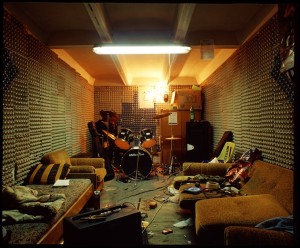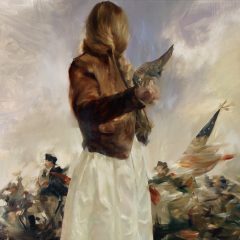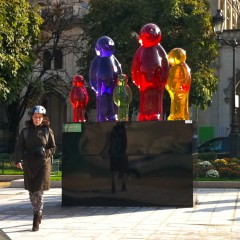The title of this post is deceptive. Sorry. I actually saw thousands of photographs at the annual photo bash in Paris, Paris Photo, (Nov. 18-21), but 12 photographs (or groups of photographs) caught my eye as I wandered through the offerings at the Carrousel du Louvre. Among the thousands, there were hundreds of images from the new capitalist China – buildings going up, people moving around, even Chinese people underwater, swimming or sunbathing. Strange because the theme this year centered upon our friends from the East, that is Eastern Europe. Anyway, there were plenty of antique photographs from the early beginnings of photography, as well as images of punk chicks, audiences watching movies, dogs standing, sitting and barking, and tons of negatives and contact sheets all intimating the essence (the very material) of photography. While I can’t say I was looking for something in particular, the works that follow are indicative of the way I often prowl museums and art spaces, fairs and even the street: I allow them to call out to me for closer inspection, as if they were mysterious ringing phones trapped inside a house; then I rush over pick up the phone for a listen. Or in this case, a look.
Oh, do not ask, “What is it?” Let us go and make our visit.
– T.S. Eliot, The Love Song of J. Alfred Prufrock
1. Tehnica Schweiz: The Garage Project, 2007-2009, Photo Lumen, Hungary.
This series of photo set ups in garage storage spaces in an old iron town in Hungary – Dunaújváros – is the brainchild of the innovative conceptual artist team Tehnica Schweiz – Gergely László and Péter Rákosi. Tehnica Schweiz playfully borrows its name from a rusted sign sitting in a field in Switzerland, and a good deal of what they did in the Garage Project is playful as well, somewhat reinventing (and perhaps perverting) the Apple Computer myth. Here, in a terribly buzzy and local series of photographs-cum installations, the project played with the secrets behind the closed doors of the garage park. Over the course of three years, some 20 artists turned the garage spaces into tableaux vivants. A piano, a llama, a garage filled with tools (!), strange objects piled up and other installations came from a joyous collaborative coup. I would have loved seeing the pot grow room garage or the man on the moon with US flag garage.
What I really enjoyed was the idea that many artists came together and that a festival was launched to celebrate this creativity in 2007. Presented by Lumen Photography Foundation and Lumen Gallery in Budapest, the Garage Project was one of a dozen headlining the Eastern European flavor of the fair.
“What people use garages for was the point of departure…but the 1,200 garage photos based on 1,200 garages that sit here became a kind of master Utopian plan,” explains László, giving me a tour of the works at the stand. “We celebrated the project with a giant festival in 2008 and another one in 2009.”
Today, the garage-city is mostly a meeting-place for men, according to the Tehnica Schweiz website: “a location for escaping family life, or a scene of alternative youth culture.” Still, he adds, the garages all hide secrets.
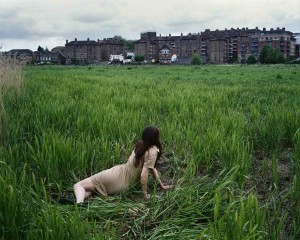
2. Tom Hunter: Anchor and Hope 2009, Purdy Hicks Gallery, London.
Tom Hunter’s contemporary riff on Andrew Wyeth’s iconic Christina’s World caught my eye immediately, largely because this was one of the very first contemporary art images I saw that meant anything to me. I was about 15 and my high school girlfriend took me by the hand to MoMA’s second floor, pointed me in front of this painting and said : “Just look.” I did. And I’ve been looking at this painting for many years; I can fairly say that regardless of what I think of it now, Wyeth’s painting is very much a landmark of my personal aesthetic landscape.
A strong image says a great deal about discovering art and its possibilities, as well as about how icons are recognized, and then re-recognized in other works. Tom Hunter’s take on the crippled girl in a field is simple – with some – but not obsessive attention paid to detail. What is compelling is how the message is filtered through the reference and still sticks, even if “Christina” is in a field in some British suburb.
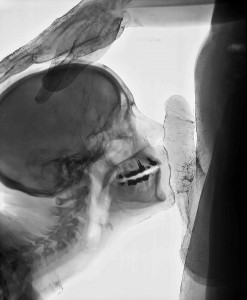
3. Wim Delvoye, Kiss 1, 2001, Beaumont Public, Luxembourg.
I didn’t see much pornography masquerading as art in this edition of Paris Photo, but perhaps I wasn’t looking very hard for it. Or perhaps there just wasn’t. However, I did notice this fairly large. 100 x 125 cm, Cibachrome print on aluminum by Wim Delvoye. Kiss 1, 2001, is of course an x-ray. Which is a photograph, and this is clearly somewhat about sex. Well, not somewhat. It is about sex. Mostly. And it’s one of a series about penetration.
Delvoye is known better for his tattooed pigskins (and live pigs) as well as refashioned Coca-Cola cans, anal prints on hotel stationary (with lipstick as the ink), as well a number of sensationally strange and terribly unusual objects like his 2008 Corten steel cement truck in red.
Some folks at the fair bitched a bit that there were lots of objects masquerading as photographs, as if it weren’t right, as if the rules were being broken. And to that I mumbled: Thank goodness. Do x-rays count? The next artist… seems concerned with that as well.
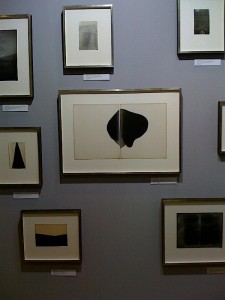
4. Alison Rossiter, Fuji Expiration (series), 2010. Stephen Bulger Gallery, Ontario, Canada
The geometric, abstract photo compositions of the youngish Alison Rossiter bridged several worlds of art and photograph with a single wall. Working in a similar way to German photographer, Wolfgang Tillmans – that is, turning photo-processed paper into sculptural or abstract works – Rossiter apparently spends a great deal of time in the darkroom. Her own process is to work with expired photo paper she’s collected, and then experiment with the strange qualities of gelatin silver papers using differing vats of chemicals, light and what have you and essentially work as an alchemist. Her results are spectacular “finds” in the way the old Ab Ex painters discovered their content while working. Her bio explains that in 2003 she became interested in photo conservation while working as a volunteer at the Metropolitan in New York, and has since become something of an expert on the history of photographic materials. No surprise, she’s also a graduate of the the Rochester Institute of Technology, in Rochester, NY, around the corner from Kodak. These works are like tourists from the 1920s and 1930s. And welcome ones, too. See Alisson Rossiter’s web site, click here.
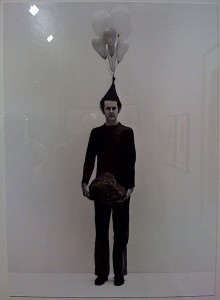
5. Sigurdur Gudmundsson, Dialogue, 1979. i8 Gallery, Iceland
Sigurdur Gudmundsson is something else. Part performer, part photographer, part one-man band, his pieces are poetic essays on wit and nonsense, or as his Icelandic gallery explains “Visual poems.” Anyone with an interest in Fluxus will enjoy these well produced documents. I’m reminded of Dennis Oppenheim’s five-hour sunburn, Reading Position for Second Degree Burn, 1970, Jones Beach, New York. Oppenheim is the wonderful artist who fell asleep in the sun for a good part of the day, a book on his bare chest. Gudmundsson plays the sunny fool, here, too, but to almost philosophical effect, asking what and how meaning is implied when (and if) a human performer is present at the center of it all.
We see Gudmundsson doing all sorts of visual tricks with his camera and his body; you have the very distinct feeling you like this artist because he’s so present, so interested in engaging you and in doing what he’s doing – like this work with his hair being pulled upward by a helium balloon, or in another work where he stands – as if for fun – between two halves of a pyramid of books. One can image these images being sent off to space as an indication of what sort of society we are. Works for me.
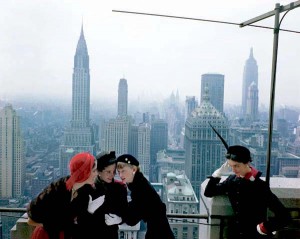
6. Norman Parkinson, (Hat Fashion), Young Velvets, Young Prices, New York, 1949.
Few other photographers captured the optimism – and the burgeoning post-war wealth – of the late 20th century as did British fashion photographer Norman Parkinson (1913–1990). Parkinson absolutely nails what we now consume as mandatory icons of an era that launched so many icons from Doris Day and Television to Frank Sinatra and the preeminence of the New American style. I came upon this reprinted jewel, Young Velvets, Young Prices, New York, 1949, and just had to dream a bit. (Originally published in Vogue, this work was printed in 2010, under the supervision of the Norman Parkinson Archive, London).
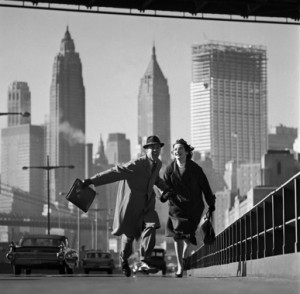
It was my parents’ world and I’m certain they saw these and other works by Parkinson, especially this absolute Manhattan icon, New York, New York, East River Drive, from the early 1960s, and went out and lived that dream. Parkinson defined an era with his photographs and continued on through the 1980s to conceive of photographs that would stand out for their composition, color and celebrity portraiture. He photographed Jerry Hall in 1975 on a Soviet plinth in a red bathing suit that is simple and gorgeous. Check out the Norman Parkinson Archive.
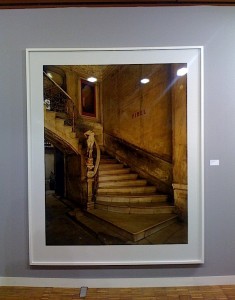
7. Michael Eastman, Fidel’s Stairway 2 (1999). Barry Friedman Gallery, New York.
These are some of the largest works (framed) I saw at Paris Photo: A series of Havana staircases, beaten by time and use, and captured by the American photographer Michael Eastman. Eastman likes his settings to be large, dated, sometimes grandiose (ballrooms in Venice, parking lots in Guadaloupe, glistening steel-paneled elevators, doors open like a mouth about to swallow the world whole). Marked with a paint-on-stone sign FIDEL, one immediately thinks that this was indeed Fidel Castro’s private staircase and the name printed there is to remind everyone, even perhaps the aging Castro, of this fact in case they took a wrong turn. It’s a warm photograph and from the right distance offers the illusion one would certainly desire from such a subject. Up close, the detail is rich and rewarding – especially for an urban decay sleuth.
Eastman, like many photographers in love with architectural details, is very content pointing his considerable talent at walls for a series of abstractions that sniff out the underlying colors and history of a particular slice of some building. What’s generous here, even though Fidel was produced in 1999, is the color, something real, dramatic and oddly comforting. Like many artists working with a camera these days, much of these abstractions is owed to the 1950s Ab Ex’ers, who generated the vast emotional palimpsest that informed the aesthetics of post war America until the snappy arrival of the Pop Stars.
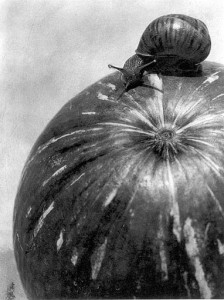
8. Manuel Álvarez Bravo, Squash and Snail, 1928
I didn’t really remember who produced this very simple and small image of a snail slowly motoring over the top of a squash, but I absolutely knew this image. Closely cropped, it’s an odd nature piece without much reference to place or time or much else. I first saw this photograph in the Port Washington, Long Island library in 1990 or so, and for some reason it took complete possession of me. I had an invitation for the show (the name of it eludes me), but there were several dozen black and white photographs from the early 20th century, among them Garry Winogrand, Bill Brandt, and Paul Strand. And Manuel Álvarez Bravo. I photocopied this piece and set off adding a text using the alphabet for the hearing impaired: “SNOTHING,” I spelled out. I bonded with the work, and when I saw the modest black and white print, I stopped as if to hug a friend I hadn’t seen in decades. The meeting was wonderful, and gave me a chance to scribble something about this wonderful photographer.
Born in Mexico City, Mexico in 1902, Manuel Álvarez Bravo began photographing in 1924. Some years later he came in contact with Diego Rivera, and through Tina Modotti (photographer for the magazine Mexican Folkways), showed his work to Edward Weston. It was the start of a rich and somewhat surreal career in photography. Bravo’s works are extremely varied but always interesting thanks to a distinct contemporary point of view with regards to composition and subject matter. He’s concerned with geometry and a super awareness of the rectangular frame the camera’s eye allows him.
Here’s a woman’s breast popping out of the landscape (and her shirt), an assassinated striking worker (1934), a pair of fire workers covered in head-to-toe asbestos outfits (1935), or a boy sweeping up a sidewalk, the entire composition rust colored. You can sense the joy and discovery in his photographs.
Tina Modotti was deported from Mexico in 1930, and Bravo took over her position as photographer for the magazine Mexican Folkways. The rest is history. Manuel Alvarez Bravo became something of a giant in the world of Modernist photography. Bravo passed away in Mexico City in 2001. A sample of his work can be seen here.
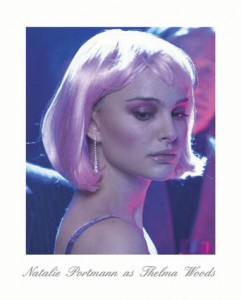
9. Carmela Garcia: Casting Series, Galería Juana de Aizpuru, Spain.
These double celebrity portraits are wonderfully ridiculous. More of a bait and switch performance of conceptual art than photography as we live and breathe it on our iPhone cameras, they still take you in, largely because you recognize the actresses and you just have to see the texts. Some samples Carmela Garcia offers us: Kate Bates as Gertrude Stein, Nathalie Portman as Thelma Wood (American sculptor, 1901-1970), Jodie Foster as Peggy Guggenheim…and there you go. Get ready for the next art bio pic. Check out the Casting Series portfolio here.
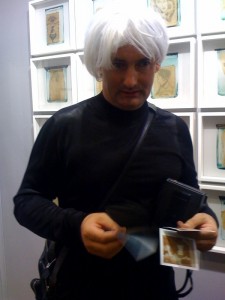
10. & 11. Chris Shaw, Taking Polaroids, Playing Warhol & Katrzyna Mirczak
I met the wandering Chris Shaw as he was pausing for a moment to photograph a couple of budding superstars, noticing his silver wig and vintage Polaroid camera. Mr. Shaw is ostensibly working on a new project (top secret), but was very pleased to tell me about his book, Life as a Night Porter, published by Twin Palms. Here Mr. Shaw details his 10 years working in London hotels and using his camera to document the various “chance meetings” while he observed the prostitutes waiting for their Johns, inebriated guests falling across the lobby and the others – hundreds– caught in mid-stream with an iron or cigarette or someone’s private parts in their hands.
Very nice man, Mr. Chris Shaw. He took my picture (Polaroid cooling off from the hot-on-the-spot photo session) and said, “No, he doesn’t usually give away his work.” Perhaps it will appear in a new book somewhere at sometime in the future? “Maybe.”
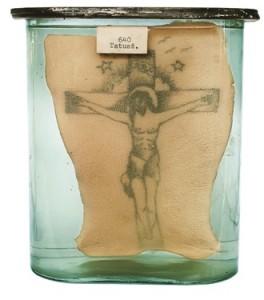
Behind Mr. Shaw (in the photo of him), are the extremely fascinating (and totally appropriate) photographs by Katrzyna Mirczak’s — showing off her collection of tattoos in embalming fluid. These pieces (on their original skins) belonged to prisoners. They somehow made their way into someone’s collection and before Mirczak’s camera. The tattoos are crude and even sometimes silly – a man on a bicycle, some kind of ’20s flapper – others typical: Jesus. See more at Eric Franck Gallery. Yes, I think Warhol would have bought the entire series.
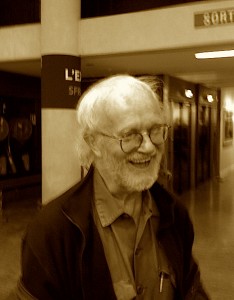
13. Joseph Koudelka. The great Magnum always-in-motion photographer was roaming the aisles and paused long enough for me to capture him without creating a blur. Well, almost. Hard to photograph a legend. See more of Koudelka’s work here.
Want more? See a selection of Paris Photo works: PARIS PHOTO.


